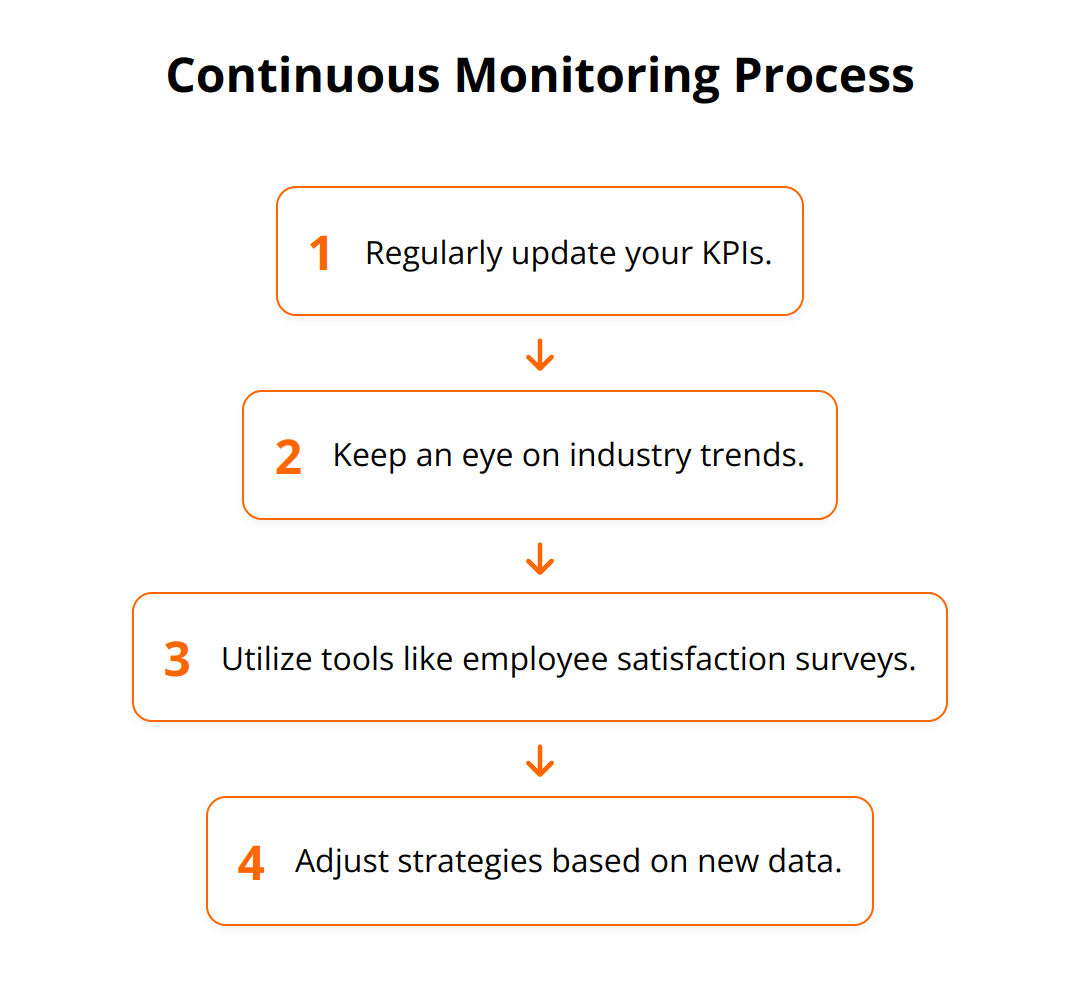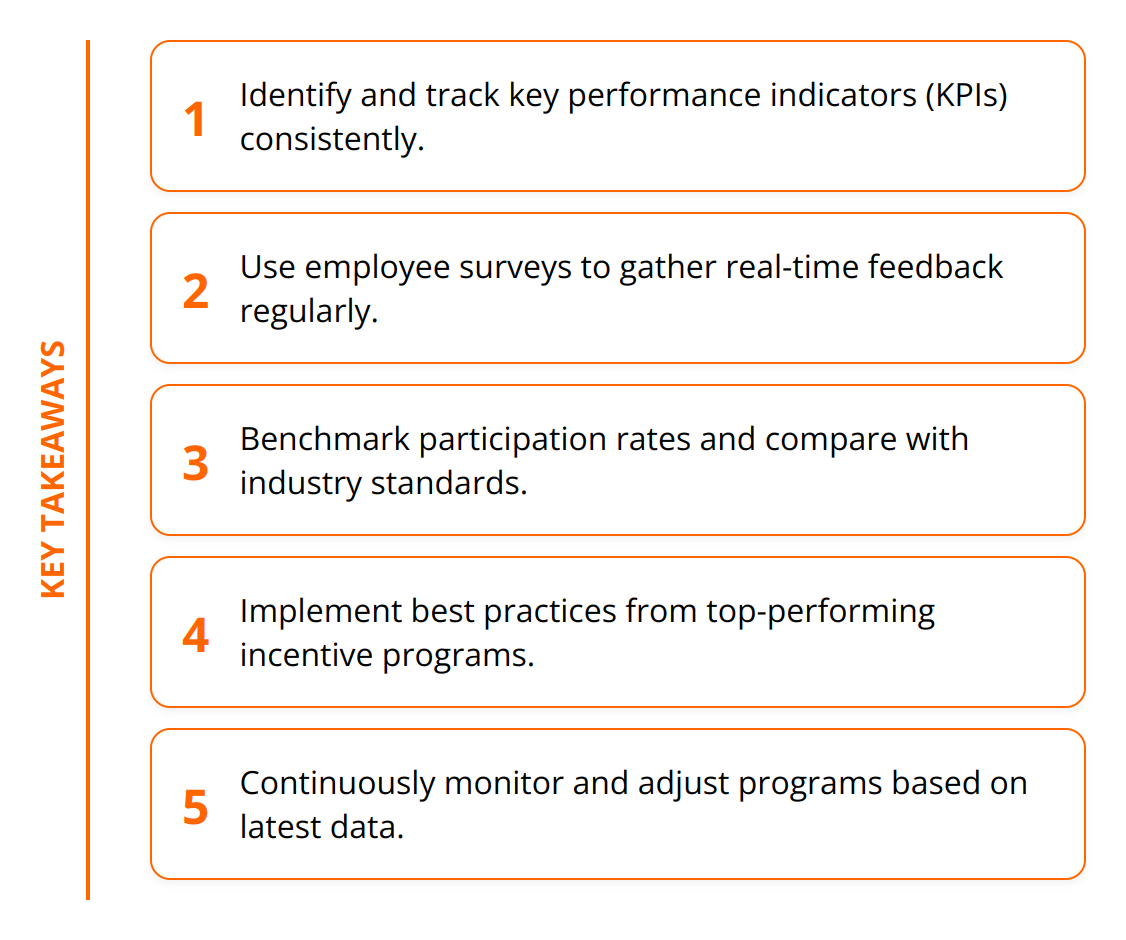
Benchmarking your employee incentive program can revolutionize how your business motivates its workforce. By comparing your practices with industry standards, you’ll uncover areas for improvement and strategic opportunities.
We at Reward the World believe in the power of data-driven decisions to enhance employee engagement and satisfaction. Let’s look at the steps and benefits of effective benchmarking.
Why Benchmark Employee Incentive Programs?
Benchmarking in employee incentive programs involves comparing your current strategies with industry standards. This helps in identifying performance gaps and opportunities for improvement.

Companies that consistently benchmark their incentive programs tend to experience higher levels of employee engagement and satisfaction. According to recent studies, businesses that benchmark effectively can see an increase in employee productivity by up to 23%.
Benefits of Benchmarking
Benchmarking brings tangible benefits:
- Identifies Gaps: By measuring your program against industry standards, you pinpoint areas that need enhancement.
- Improves Retention: Incentive programs aligned with industry benchmarks can decrease employee turnover by 14%.
- Enhances Performance: Companies that benchmark regularly see up to a 21% boost in individual performance.
- Cost Efficiency: By recognizing inefficient practices, businesses can reduce unnecessary costs related to incentive programs.
- Strategic Advantage: Stay ahead of competitors by adapting the most successful incentive strategies in your industry.
Common Metrics Used in Benchmarking
When benchmarking, several key metrics should be considered:
- Participation Rates: Measure the percentage of employees actively engaged in your incentive programs.
- Reward Redemption Rates: Evaluate how often employees are redeeming their earned rewards.
- Employee Feedback: Use surveys to gather insights on the effectiveness and appeal of current incentives.
- Financial Impact: Track the ROI of incentive programs by assessing how much revenue or productivity gains they generate.
- Benchmark Against Peers: Compare your metrics with those of similar companies in your industry to gauge where you stand.
Incorporating these metrics into your benchmarking efforts ensures a data-driven approach to improving your incentive programs. For more detailed strategies, check out our incentive program analytics.

Benchmarking is not just a one-time effort. Continuous monitoring and comparing against the best in the field ensure that your incentive programs remain effective and competitive.
How to Benchmark Employee Incentive Programs
Identify Key Performance Indicators (KPIs)
Start by pinpointing the most critical KPIs for your incentive program. Common KPIs include participation rates, reward redemption rates, employee satisfaction, and financial impact. These indicators provide measurable data points vital for a successful benchmarking process.

Collect and Analyze Data
Gathering data is the next significant step. Use employee surveys, HR records, and financial reports to collect information. For participation rates, calculate the percentage of employees actively engaged in your programs. Use analytics tools to track reward redemption rates and gather feedback through employee satisfaction surveys. Data quality is crucial, so double-check for accuracy and consistency.

Compare Against Industry Standards and Competitors
Once you’ve collected your data, it’s time to make comparisons. Use industry reports and market research to identify standard metrics. It’s highly effective to benchmark against similar companies in your industry to evaluate where you stand. For example, if your participation rate is 60% but competitors average 75%, there’s room for improvement. Use reliable resources and tools for this stage, such as incentive program personalization techniques.
Benchmarking offers valuable insights for refining your incentive programs. By closely monitoring KPIs, analyzing collected data, and making informed comparisons, you ensure your strategies are both relevant and competitive.
Following these steps will not only improve employee engagement but also optimize your costs and boost overall performance. Keep evolving your benchmarks to stay ahead of industry trends and continually enhance your incentive programs.
How to Act on Benchmarking Results
Addressing Identified Gaps
Benchmarking often reveals key weaknesses in your employee incentive programs. Addressing these gaps should be your first priority. For example, if employee participation rates lag behind industry standards, consider introducing more appealing rewards like prepaid or gift cards, which 41% of employees prefer. Revamp your communication strategy to ensure all employees are aware of the incentives available to them.
Implementing Best Practices
Adopt best practices from top-performing programs to elevate your own. Studies show that companies who implement personalization techniques in their incentive programs see higher engagement levels. Tailor rewards to individual preferences and career goals to make them more meaningful. Another effective tactic is integrating non-cash perks such as wellness subscriptions, which are increasingly popular. Learn more about effective incentive schemes for additional tips.
Continuous Monitoring and Adjusting
It’s not enough to benchmark once; continuous monitoring is crucial. Regularly update your KPIs and keep an eye on industry trends to stay ahead. Utilize tools like employee satisfaction surveys and real-time analytics to gather ongoing feedback. Adjust your strategies as new data comes in. This can lead to significant improvements, including a potential 21% boost in individual performance.

Actionable Tips:
- Track KPIs: Participation rates, reward redemption rates, employee feedback, and financial impact.
- Regular Feedback: Use surveys and one-on-one meetings for real-time insights.
- Adjust Frequently: Modify programs based on the latest data and trends.
By taking these steps, your incentive program will not only become more effective but also more aligned with the needs and preferences of your employees.
Conclusion
Benchmarking your employee incentive program is a powerful strategy for identifying areas of improvement and unlocking the full potential of your workforce. By following a structured approach, such as identifying key performance indicators, collecting and analyzing data, and comparing against industry standards, you can make data-driven decisions that lead to significant enhancements in employee engagement and productivity.

The importance of continuous improvement cannot be overstated. Regularly updating your benchmarks and adjusting your strategies based on the most current data and trends ensures your incentive programs remain effective and competitive. This proactive approach leads to sustained success and helps in retaining top talent.
Using benchmarking as a tool for business growth can yield substantial benefits. Companies that frequently benchmark their incentive programs not only achieve better employee retention rates but also see increased performance and cost efficiency. This ultimately provides a strategic advantage over competitors.
We at Reward the World offer a comprehensive platform that caters to the needs of businesses seeking to elevate their employee incentive programs. With our seamless integrations, GDPR compliance, and vast range of rewards, we are well-equipped to help you achieve your goals. For more practical advice on improving your incentive programs, check out our incentive program analytics and effective incentive schemes.
To learn more about how Reward the World can support your benchmarking efforts and drive business growth, visit Reward the World.
